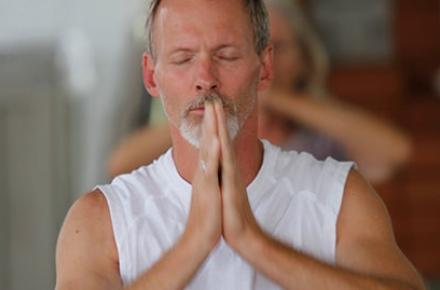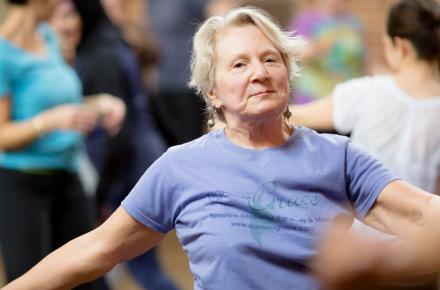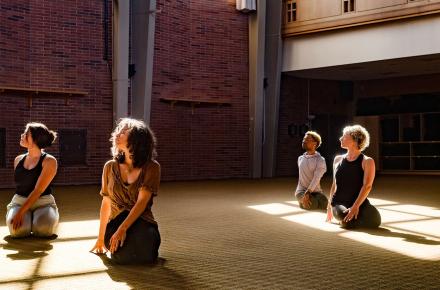Muscle Imbalances: The Key to Unlocking Pain


Everyone experiences pain at some point. The problem of chronic pain in our bodies is complex and far-reaching. Musculoskeletal pain encompasses many different areas, such as the head, neck, back, limbs, joints, bones and even chronic nonspecific widespread tissue pain.
At least one hundred million Americans suffer from chronic pain. Chronic pain is defined as pain lasting longer than six months. That number goes much higher when we add the statistics for acute pain. Chronic and acute pain can range from mild to moderate to excruciating. According to a recent Institute of Medicine Report: Relieving Pain in America: A Blueprint for Transforming Prevention, Care, Education, and Research, pain is a significant public health problem that costs society at least $560–$635 billion annually.
Pain is a huge economic burden both on our health care system and on individuals. Not only does it cause higher insurance rates, but it also creates various additional financial costs for the individual. Studies have shown that individuals with acute or chronic pain have much higher out-of-pocket expenses, therefore leaving less money for other necessities that we deem important (like ... having a lot more fun!). Employers are also impacted because of lost workdays, as adults with pain report missing more days from work than people without pain. Chronic pain affects more people than the combined dollars spent for cancer, heart disease, and diabetes.
Despite the wide-ranging conditions and symptoms, all types of musculoskeletal pain share similar underlying mechanisms, manifestations, and potential treatments. In the final analysis, most pain is foundational, resulting from imbalances in a musculoskeletal system that is out of alignment. A great deal of research presents evidence that the root cause of many neuromuscular pain patterns is due to biomechanical misalignments caused by muscle imbalances. We are in pain because we are misaligned, or “crooked.” Therapists often refer to this as the muscles being “locked long” or “locked short.”
Remember when your mother told you to sit up or stand up straight? Well, she was right! Your mother probably didn’t know it at the time, but good posture is more than simply looking good.
Good posture is essential to a healthy, functioning, pain-free body. Most of your pain is caused by poor posture. You are in pain because you are misaligned or . . . crooked! Even if you think you have good posture, you probably don’t. Many misalignments are not obvious to the untrained eye.
This may seem too simple, but let’s look at some examples. Picture a house in your mind.
Imagine that the basement of the house is a little lower on one side. In other words, the house is crooked. Over time, the crooked house develops all sorts of structural problems, i.e. the roof might leak, windows are hard to open, the chimney leans, etc. The structure of the building is not carrying the load the way it was designed because it is not straight. All these problems are caused by one condition: the house is crooked.
You could also imagine a car with its front end out of alignment. The car will run, but the tires will have abnormal strain on them because the car is crooked, and those tires will wear out more quickly than if they were aligned.
The solution in each case is to bring the building or the car back into proper alignment—give the car or the building “good posture” so it carries its load the way it was designed to.
Let’s apply this theory to the human body and your pain. Do you know what the following conditions have in common: sciatica, plantar fasciitis, carpal tunnel, tennis elbow, low back pain, neck pain, and most headaches?
At first, they don’t seem to have much in common. They occur in different parts of the body and involve different musculoskeletal structures. However, if you step back and look at the body as a whole, you will notice the common element.
This common element is called muscle imbalance. This simply means that some muscles are too short and some muscles are too long. Both muscles will feel tight. The short muscle is contracted and tight, and the long muscle is like an overstretched rubber band—too long and very tight.
Since every muscle is attached to a bone, these muscle imbalances pull the bones out of alignment. That’s what makes you crooked.
Optimal functioning of the musculoskeletal system requires that muscles be in balance in regard to strength and length. If they do not possess this balance, then the muscles become painful and the joint where these imbalances are occurring will become compromised. This often manifests as pain in that joint and/or limited range of motion.
Misalignment of the skeletal structure caused by muscle imbalance can cause compressions of the nerves, discs, and other structures in the body. It can also cause the fascia to be twisted. Fascia is a band of fibrous connective tissue enveloping, separating, or binding together muscles, organs, and other soft structures of the body. These twists, compressions, and tight muscles ultimately lead to less oxygen in the tissues at those areas. The medical term for this condition is ischemia, which means an inadequate supply of blood is reaching the tissues. As a result, the tissue is not getting enough oxygen. That lack of oxygen is what causes a good deal of the pain.
We all have demands that keep us working through our pain. So we continually re-strain the same muscles through our daily activities until we learn how to do those activities without causing muscle strain.
One of the most common causes of muscle imbalances is simply poor posture and/or improper ergonomics. Slumping at your desk or in your car pushes your head forward of your body, putting a lot of strain on your neck and shoulders, which now have to hold up your head without the support of the spinal column. The average head weighs between eight and 12 pounds. That is very heavy. If you tried to hold that much weight with your arms, you probably would not last more than five minutes. Yet we ask our neck and shoulder muscles to hold that weight all day long. These muscles are not designed to hold up your head. They are meant to move your head in different directions, not hold them in the same position for long periods of time. By correcting your computer and driving positions, you will bring your head over your shoulders and improve your posture. Your bones (the spinal column) will be holding up your head, which will help take the strain off the muscles.
To summarize, muscle imbalances pull the frame of the body (the bones) into misalignment, causing pain in the body. The condition of being out of alignment or crooked results in many neuromuscular pain patterns. An estimated 80 percent of all the pain you will experience in your life is due to these misaligned mechanical problems. Muscles that are either too long or too short pull your bones crooked, causing compression and reducing oxygen to the tissues.
The key to understanding and eliminating pain is to be able to recognize the cause. When you go to a doctor, you could be diagnosed with any one of hundreds of conditions. In our Western model of medicine, standard treatment for conditions like sciatica, plantar fasciitis, carpal tunnel, tennis elbow, low back pain, neck pain, and most headaches involves treating the symptoms, typically with a painkiller, an anti-inflammatory drug, or sometimes even surgery. Seldom does treatment address the cause. The cause is muscle imbalance or misalignment, and the correct treatment is to get you “uncrooked.”
Find out about upcoming programs with Lee Albert at Kripalu.
Excerpted with permission from Live Pain Free: How to Eliminate Chronic Pain without Drugs or Surgery, © 2018, by Lee Albert.






















































